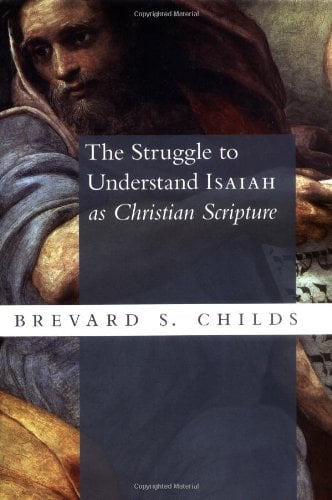Clement of Alexandria (ca. 150-214 A.D.) is treated next, and as Childs admits, he really doesn’t have much to say about Isaiah, or if he did, it is mostly lost to us with his work Hypotyposeis being no longer extant. We do have some fragments of the Ecologue Propheticae in which we find a few citations of Isaiah (Is. 40.6 in 25-26; Is. 19.20 in 16.2; Is. 44.6 and 45.5-6 in 38.1, and Is. 2.3 in 58) but it is not enough to really sink one’s teeth into. Clement is important however for introducing Hellenistic Judaism’s way of interpreting texts (see e.g. Philo) into the mainstream of Christian interpretation of the Scriptures, and not only so, he sought to relate the moral symbolism of Greek traditions with that of the Bible. In due course the ‘Alexandrian’ approach to hermeneutics had blossomed, and could be contrasted to a real degree with the Antiochian school of interpretation of Biblical texts. Clement then is a pivotal figure especially for people like Origen and Eusebius.
From a perspective of philosophical hermeneutics, Clement is important because he derives from Is. 7.9 the principles that if you won’t believe, you will never understand (see Stromateis 1.1.8.2; 2.2.8.2; 4.17.4). Faith then is a means to, or even a form of understanding. What happens when one believes is that one gains the power of fair and rational judgment of reality which is necessary to gain a clarity of understanding of reality. Faith is the means and understanding is the goal and result, or put another way faith is the recognition of how things actually are, forced upon the believer by objective reality itself. If this sounds rather like Anselm’s ‘fides quaerens intellectum’ you are on the right track. One can see Philo’s influence as well when “the historical meaning of the biblical text was often rendered as a symbolic reflection of the realities of a timeless world.” Needless to say, Plato, filtered through Philo, to a philosophically inclined Clement led to all kinds of interpretations of the book of Isaiah and the OT in general that Isaiah himself would hardly recognize, nor would the earliest Jewish Christians. What happened is allegorizing of non-allegorical texts run rampant thus for instance in the Gen. 26 story of Abimelech watching Isaac ‘sporting’ with Rebecca Clement suggests that Rebecca is a type of the church and Abimelech represents the Word looking through the window of the flesh of Christ which he assumed at incarnation (Paedagogos 1.5.22-23; Strom. 1.5.31.3). Now we are indeed off to the allegorizing races and should not be surprised that it leads to St. Augustine’s famous allegorizing of the Good Samaritan parable, among other things. This makes Paul’s allegorizing of the Sarah and Hagar story in Gal. 4 look tame!
Clement suggests we must look beyond the ‘fleshly’ sense of the Biblical text to the hidden mystical meaning. The problem of course with this approach is that it makes interpreting the Bible and exercise that requires experts in decoding the symbolism. He is prepared to treat the whole of the Bible rather like what Jesus says about parables, it is opaque, unless you have the symbolic keys to the kingdom of interpretation, having an insider’s guide to its meaning. In this respect, Clement seems to have been influenced some by Gnostic traditions.












